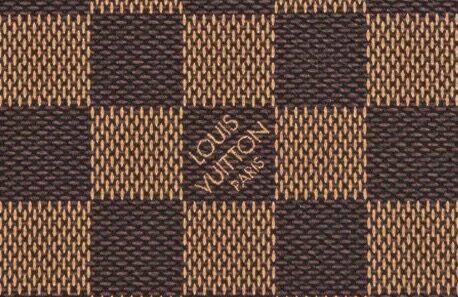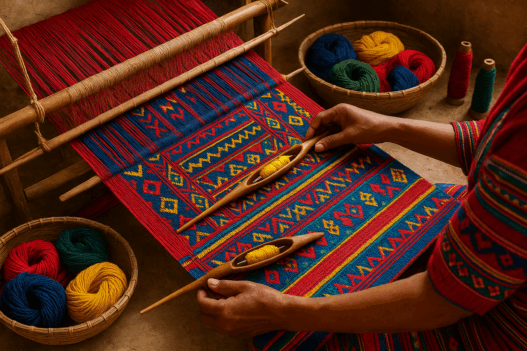India, as a country, represents an interwoven web of cultures. With this diversity, the scope of innovation broadens. Each distinctive community and its varied, authentic culture adds to this treasure chest of unique, authentic, traditionally rooted, and culturally relevant products. These geographically unique products are deeply rooted in and inspired by the communities to which they belong. So much so that the people belonging to these specific regions often derive a sense of identity, cohesion, and cultural belongingness through them.
When these community-rooted products, known for their reputation, special traits, popularity, and quality, built over decades with their shared place of origin, attempt to find legal protection, their shield becomes Geographical Indications. They aim to primarily benefit rural, marginal, and indigenous communities by creating economic value for the products originating from their specific geographical heritage. They also contribute to the regional economy by creating employment opportunities.
Geographical Indications (also known as GIs) are a form of Intellectual Property Rights that help in protecting products with a specific geographic origin and preserve associated traditional knowledge with the help of legal frameworks. They are governed by the Geographical Indications of Goods (Registration and Protection) Act, 1999, in India.
The northeastern part of India, commonly referred to as the Seven Sisters, is a repository of unique and often underexplored cultural heritage. Cumulatively, out of the 658 registered GI tags in India, 82 trace their origin back to the northeastern region. This article aims to explore the contribution of GI tags in protecting the traditionally rich textiles, garments, and fashion crafts from the northeast.
But before understanding the unique fashion products offered by this culturally diverse region, we need to answer: Who can apply for a GI tag? And what is the criterion to obtain a GI tag?
Key Criteria for Obtaining GI Tags
An application for a GI tag can be raised by any association of persons who represent the interests of the producers of the product in good faith. They should also be able to demonstrate a direct interest in either the production or sale of the product. This can be any person, manufacturer, organisation, or authority, as long as they are legally permitted and in a position to do so.
For a product to qualify and obtain a GI tag, a few key elements must be established. Foremost, it is essential to show that the product originates from a defined geographical area. The product must also have distinctive qualities, characteristics, or a reputation linked essentially to its place of origin. It should be unique and clearly connected to the said geographical place. Additionally, it is also important to note that the product cannot be opposed to public order and should not breach the ideals of morality in a reasonable sense.
So, what are some of the unique products from the northeastern states that have been granted GI tags?
GI Tags and the Fashion Heritage of Northeast India
The northeastern region of India comprises seven states: Arunachal Pradesh, Assam, Manipur, Meghalaya, Mizoram, Nagaland, and Tripura. Each of these states has a wide range of Geographical Indications registered in its name, separately and together. The diverse population, with its distinctive culture, offers a variety of unique products. From Arunachal Pradesh’s Monpa Handmade Paper to Tripura’s Queen Pineapple, several GI tags find their place of origin in the Seven Sisters.
Interestingly enough, it is also a hub of beautifully woven and patterned textiles, tracing their origins to the regional tribes, often times. For instance, Arunachal Pradesh, famously known as the land of the rising sun, traces the existence of the GI tag for the Adi Textile. This is a location-specific and gender-sensitive woven handicraft textile famous for its unique patterns and designs. It is passed through generations of women and is a key cornerstone of the state’s culture. Not only are these designs unique, but they are also inspired by everyday life, ancestral history, myths, and legends originating from shared history and spiritual beliefs. This land of the rising sun is also famous for Galo Textile and Handmade Carpet, among many other fashion-relevant GI tags that originate from its geography.
Bodo Gamsa from Assam is another example of the unique fashion heritage of the northeast. Gamsa is a traditional dress worn by Bodo men native to Assam. Remarkably, the Bodos were the first ethnic group in India to introduce the art of weaving silk clothing through the rearing of silkworms. The colour combination is distinct and relevant to the group’s culture. In fact, traditionally, the green Gamsa is commonly worn as a Bodo wedding attire. The GI tag for this is owned by the Association of Bodo Traditional Weavers. Some other famous examples of GI tags include the famous Muga Silk of Assam.
The Chakhesang Shawl is famously a product tracing its origin to the Chakhesang trib, commonly native to the Phek, Kohima, and Dimapur Districts in the State of Nagaland. The unique textile of these shawls is a mix of cotton, nettle, and jute plants. Certain patterns of these shawls represent the cultural dynamics of the Chakhesang tribe’s social existence. For example, the wearers of the Thdpikhti/Thsiiketstira/Hapidasa shawl are deemed to be highly prosperous within the tribe. These shawls are also naturally made and are highly eco-friendly.
Some other culturally rooted fashion-specific GI tags tracing their origin to the northeastern region of India include the Tripura Pachra-Rignai textile, Meghalaya Garo Dakmanda textile, Mizoram’s Pawndum, Manipur’s Shaphee Lanphee, Wangkhei Phee, Moirang Phee, and others.
While the existence of registered GI tags is of key importance to protecting the unique traditional fashion heritage of the northeast, it is not without some legal challenges. A notable example is the ongoing litigation concerning the Chakhesang Shawl from Nagaland, which highlights the relevance of GI tags and the hurdles in their enforcement.
The Case of the Chakhesang Shawl
In 2020, the Chakhesang Women Welfare Society (CWWS) filed a lawsuit claiming damages caused due to the alleged “wrongful” and “illegal action” and infringement of the GI-registered Chakhesang shawls by fashion designer Ritu Beri and the Tribal Co-operative Marketing Development Federation of India Ltd (TRIFED). This was showcased during Suraj Kund Crafts Mela earlier that year under the theme ‘Naturally Northeast: The Naga Narrative’ without seeking the prior permission of the CWWS, who are the owners of the GI tag for the same. This created considerable controversy and was widely discussed on a national level. The suit is still in progress, as the litigation remains pending.
In conclusion, the existence of GI tags tells a story about the unique origins of the product. Their existence shields against the cultural appropriation of the patterns, colours, and textiles specific to the regional identity of the communities. They not only preserve age-old knowledge and craftsmanship but also promote sustainable economic growth for marginalised groups by giving them rights over such production and/or sale. Rising awareness, coupled with strict legal recourse in cases of breaches, helps ensure the promulgation of the unique fashion histories emerging from this part of India and adds to the well-deserved fame they could garner.



















